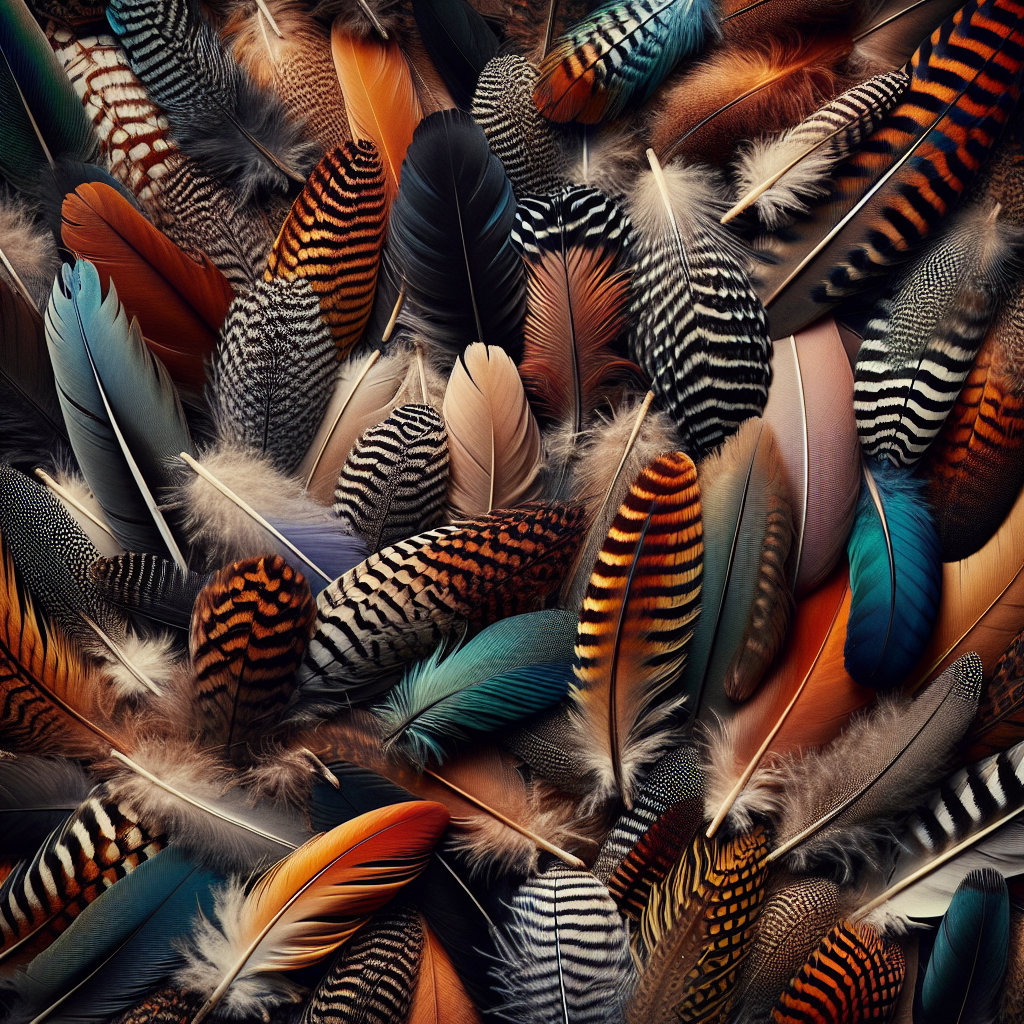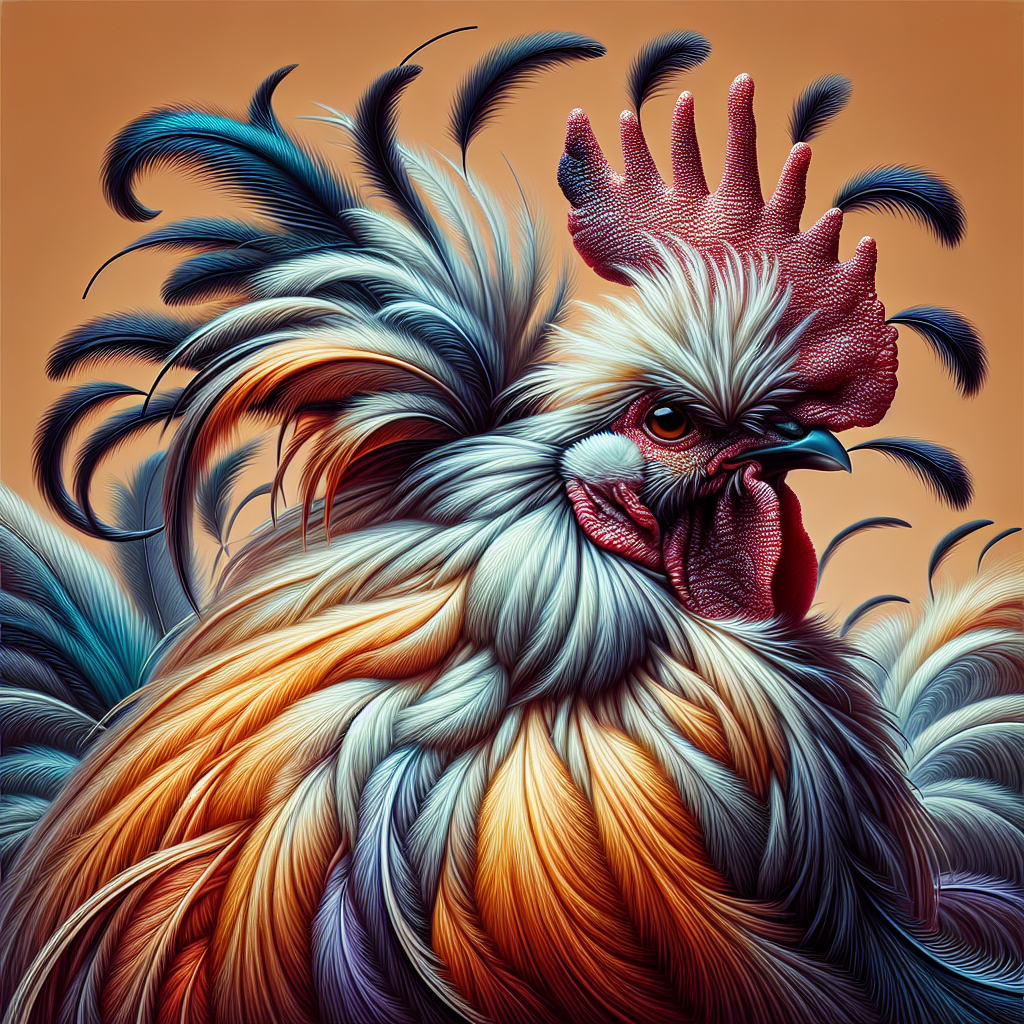Did you know that chicken breeds can have a wide range of feather colors and patterns? From vibrant reds and blues to elegant black and white combinations, the variation among chicken breeds is truly fascinating. In this article, we will explore how different factors such as genetics, breeding, and environmental conditions contribute to the diverse feather colors and patterns found in chicken breeds. So, if you’ve ever wondered why some chickens have strikingly colorful feathers while others have more subdued patterns, keep reading to unveil the secrets behind this intriguing phenomenon.
Feather Colors
Brown Feathers
Brown feathers are a common and natural coloration found in many chicken breeds. These feathers often have a warm and earthy tone, ranging from lighter shades of tan to deeper shades of chestnut brown. Brown-feathered chickens give off a cozy and rustic vibe, making them a popular choice for backyard chicken keepers who want to add a touch of warmth to their flock.
White Feathers
White feathers exude a sense of purity and elegance. They possess a clean and pristine appearance, which can be visually striking against a contrasting background. White-feathered chickens are highly sought after for their ability to brighten up a flock and create a visually appealing aesthetic. Additionally, white feathers can help reflect sunlight, keeping chickens cooler during hot summer months.
Black Feathers
Black feathers are all about sophistication and mystery. These feathers have a sleek and glossy appearance, often shimmering under the sunlight. Black-feathered chickens can be captivating to look at, and their dark plumage creates a dramatic contrast against greens and other vibrant colors in the environment.
Red Feathers
Red feathers bring warmth and vibrancy to a flock. Ranging from deep mahogany shades to bright copper hues, red-feathered chickens can instantly catch the eye. The fiery tones of their feathers can add a touch of excitement and energy to any chicken coop. Many chicken breeds with red feathers are highly valued not only for their visual appeal but also for their excellent egg-laying abilities.
Gray Feathers
Gray feathers may not be as commonly seen in chickens as other colors, but they certainly have their charm. These feathers often appear in various shades of gray, from light silver to dark charcoal. Gray-feathered chickens can give off an air of elegance and sophistication, making them a unique addition to any flock.
Patterns
Solid Colors
Solid-colored feathers have a uniform appearance, with no visible markings or patterns. These feathers come in a wide range of hues, including black, white, brown, and gray. Chickens with solid-colored feathers tend to have a sleek and polished look, allowing their feather color to take center stage without any distractions.
Striped Patterns
Striped patterns consist of feathers with distinct bands or stripes of color. This pattern can range from thin, subtle stripes to bold and eye-catching bands. Chickens with striped feathers often exhibit a mesmerizing and visually appealing display, with each feather showcasing a unique combination of colors.
Mottled Patterns
Mottled patterns feature feathers with a speckled or marbled appearance. These feathers can have a combination of two or more colors, creating a captivating and intricate pattern. Mottled feathers give chickens a charming and rustic look, as if they were touched by nature’s artistic brushstrokes.
Spangled Patterns
Spangled patterns exhibit feathers with a central color surrounded by contrasting dots or spots. This pattern creates a captivating and dynamic look, as if the chickens are adorned with a sprinkle of stardust. Chickens with spangled feathers often have a playful and lively appearance, adding a touch of whimsy to any flock.
Laced Patterns
Laced patterns involve feathers with a delicate border or edging of a contrasting color. This pattern creates a visually striking effect, as if the feathers were delicately threaded with intricate lacework. Chickens with laced feathers exude an aura of elegance and refinement, making them a popular choice for those seeking a touch of beauty in their flock.
Feather Color and Pattern Genetics
Basic Genetic Principles
Understanding the genetics behind feather color and patterns requires a basic grasp of how traits are inherited. Chickens inherit genetic information from both their parents, which determines the color and pattern of their feathers. Genes come in pairs, with one gene inherited from each parent, and can be either dominant or recessive.
Inheritance of Feather Color
Feather color is primarily determined by the presence or absence of pigments. For example, the gene responsible for black pigmentation is dominant, while the gene for white pigmentation is recessive. When a chicken inherits one dominant black gene and one recessive white gene, it will exhibit black feather coloration. However, if a chicken inherits two white genes, it will have white feathers.
Inheritance of Feather Patterns
Feather patterns are controlled by a combination of different genes. The specific genes responsible for patterns are more complex, often involving multiple alleles. A single gene may affect the width, shape, or arrangement of color bands or spots on the feathers. The inheritance of these patterns can vary greatly due to the interaction of multiple genes.
Breed-Specific Feather Colors and Patterns
Rhode Island Red
Rhode Island Red chickens are known for their rich mahogany-red feather color. They exhibit a solid coloration, with no patterns or markings. This breed’s feather color is highly consistent, making them easily recognizable. Their deep red plumage adds warmth and vibrancy to any flock.
Wyandotte
Wyandotte chickens are famous for their stunning patterns. They come in a wide variety of feather colors, including solid black, white, silver, and gold. Their unique feather pattern, known as “lacing,” features a contrasting color edging on each feather, creating a visually striking aesthetic.
Orpington
Orpington chickens are renowned for their fluffy and soft feathering. They come in various colors, such as black, white, blue, and buff. Orpingtons often possess a single color pattern, with no visible markings or patterns. Their feathers have a gentle and silky appearance, making them a delight to touch and admire.
Plymouth Rock
Plymouth Rock chickens, also known as Barred Rocks, have a distinct and eye-catching feather pattern. Their feathers are striped perpendicularly, creating a striking “barred” pattern. The dominant black coloration is broken up by crisp white bars, resulting in a visually captivating appearance.
Silkie
Silkie chickens are known for their unique and fluffy appearance. Their feathers lack the hard and smooth texture found in most chicken breeds, giving them a soft and silky feel. Silkie chickens come in various colors, including black, white, blue, buff, and gray. Their feathers often feature a mottled pattern, creating a charming and irresistibly cute appearance.
Environmental Factors Affecting Feather Colors
Sunlight Exposure
Sunlight exposure can impact the appearance of a chicken’s feathers. Sunlight contains ultraviolet (UV) rays, which can cause bleaching or fading of feather pigments. Chickens exposed to prolonged periods of direct sunlight may experience a lightening or dulling of their feather colors over time.
Seasonal Changes
Seasonal changes can also affect the color of a chicken’s feathers. Some breeds undergo molting, a natural shedding and regrowth of feathers, during different seasons. The new feathers that grow in may appear slightly different in color than the old feathers, leading to variations in feather color throughout the year.
Nutrition
The diet of chickens plays a significant role in their feather coloration. Certain nutrients, such as carotenoids found in leafy greens or corn, can enhance or alter the intensity of feather pigments. Balanced and nutritious diets can contribute to vibrant and healthy feather colors in chickens.
Health Conditions
The overall health of a chicken can impact the appearance of its feathers. Various health conditions, including nutritional deficiencies, infections, or hormonal imbalances, can cause changes in feather color, such as dullness, discoloration, or abnormal patterns. Maintaining good flock health is essential in ensuring optimal feather coloration.
Feather Colors and Camouflage
Natural Selection
Feather colors can play a crucial role in the survival of chickens in the wild. Natural selection favors individuals whose feather colors provide effective camouflage in their specific environments. For example, chickens with brown or mottled feathers may blend in better with their surroundings, making them less noticeable to predators.
Predator Avoidance
Feather colors can also aid in predator avoidance. Some chickens have evolved colors and patterns that mimic dangerous or venomous animals, deterring potential predators from approaching them. This natural defense mechanism helps ensure the survival of these chicken breeds in the presence of predators.
Hiding from Prey
In some cases, chickens with specific feather colors or patterns are better equipped to hide from their prey. For example, chickens with white feathers may have an advantage in snowy environments, as their coloration allows them to blend into the surroundings and avoid detection.
Feather Colors and Breeding Preferences
Aesthetic Appeal
Feather colors and patterns often play a significant role in breeding preferences for chicken enthusiasts. Many individuals have a personal preference for certain feather colors or patterns, which influences their selection of breeding pairs. Breeders often aim to create visually appealing flocks by selectively breeding chickens with desired feather colors and patterns.
Traditional Standards
Certain chicken breeds have established breed standards that dictate specific feather colors and patterns. Breeding for adherence to these standards ensures the preservation of the breed’s unique characteristics and helps maintain consistency among individuals within the breed.
Rare and Exotic Breeds
Feather colors and patterns that are rare or unique can be highly valued among chicken enthusiasts. Breeders and collectors often seek out chickens with unusual or exotic feather colors to add to their flocks. These rare breeds contribute to the diversity and richness of the poultry world and are often admired for their exquisite and distinct appearance.
Feather Colors and Conservation Efforts
Preserving Endangered Breeds
Feather colors play a vital role in the conservation of endangered chicken breeds. Certain chicken breeds with unique or rare feather colors may face the risk of extinction due to declining population numbers. Conservation efforts aim to protect and preserve these breeds, ensuring that their diverse feather colorations are not lost to future generations.
Maintaining Genetic Diversity
Feather colors are an essential aspect of genetic diversity within chicken populations. Genetic diversity contributes to the overall health and adaptability of a breed. By maintaining a diverse range of feather colors within a breed, breeders can help safeguard against potential genetic disorders or vulnerabilities that can arise from limited genetic variation.
Artificial Modification of Feather Colors
Dyeing Feathers
In some cases, chicken owners may choose to dye their chicken’s feathers for aesthetic purposes. Dyeing feathers can create a striking and unique appearance, allowing chicken owners to customize their flock’s appearance. However, it is crucial to use non-toxic and safe dyes specifically formulated for use on feathers to ensure the wellbeing of the chickens.
Genetic Modification
Genetic modification techniques can also be used to alter feather colors in chickens. By manipulating genetic material, scientists can introduce or remove certain genes responsible for feather pigmentation. However, genetic modification in chicken breeding is a complex and controversial topic, and its practical applications are limited and regulated in many areas.
Feather Color Care and Maintenance
Protecting Feathers
To maintain vibrant and healthy feather colors, it is essential to provide chickens with appropriate protection. Providing a well-designed coop, predator-proof fencing, and adequate shelter from harsh weather conditions can help prevent feather damage and preserve their coloration. Regular health checks and parasite control are also important to minimize any potential feather-related issues.
Cleaning and Grooming
Regular cleaning and grooming practices can help maintain the appearance of feathers. Grooming chickens involves dust baths, which help control parasites and keep their feathers clean and well-maintained. Removing dirt, debris, or stains from feathers through gentle cleaning practices can help enhance their color and overall aesthetic appeal.
In conclusion, chicken breeds exhibit a diverse array of feather colors and patterns, each contributing to the uniqueness and beauty of these fascinating creatures. Feather coloration is influenced by genetic factors, environmental conditions, and the selective breeding preferences of chicken enthusiasts. Whether for camouflage, aesthetic appeal, or conservation efforts, feather colors play an integral role in the world of chickens. By understanding and appreciating the multitude of feather colors and patterns, we can further cherish and admire the remarkable diversity of chicken breeds.




